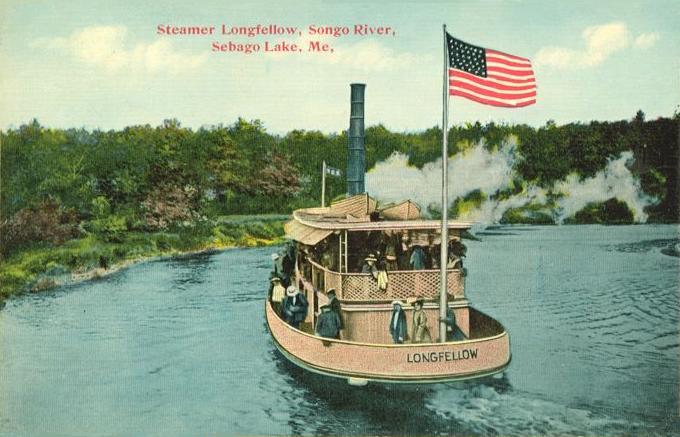 Here we are in August. The end of camp is near and we can’t believe how fast another summer has flown by. It truly is a privilege for us to be able to host so many campers each summer. We’re sad that the Summer of 2011 is already drawing to a close, but excited to begin planning for the Summer of 2012. For us, our greatest challenge is to make each summer better than the previous. That’s a hard thing to live up to when the current summer has been so amazing! Collectively, we really couldn’t have asked for a better group of parents, campers, or staff members. We know that all of you are what makes America’s Finest Summer Camps truly America’s finest summer camps! We can’t wait to meet those who will be joining us for the first time in 2012 and to welcome back all of our friends! To everyone, here’s to living 10 for 2…until our next 2!
Here we are in August. The end of camp is near and we can’t believe how fast another summer has flown by. It truly is a privilege for us to be able to host so many campers each summer. We’re sad that the Summer of 2011 is already drawing to a close, but excited to begin planning for the Summer of 2012. For us, our greatest challenge is to make each summer better than the previous. That’s a hard thing to live up to when the current summer has been so amazing! Collectively, we really couldn’t have asked for a better group of parents, campers, or staff members. We know that all of you are what makes America’s Finest Summer Camps truly America’s finest summer camps! We can’t wait to meet those who will be joining us for the first time in 2012 and to welcome back all of our friends! To everyone, here’s to living 10 for 2…until our next 2!
The Importance of Being Creative
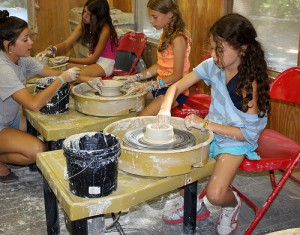 Arts and Crafts at summer camp is more than just stringing together a few beads to make a bracelet or gluing some spray painted macaroni to a cardboard picture frame. It’s a program that gives campers the opportunity to explore their creative interests in several different types of art by offering a diverse array of age appropriate projects. Of course there are the traditional projects that are just plain fun, like paper mache and tie-dying. However, many summer camps also offer campers the opportunity to try things that are not only artistic but could be useful skills or even careers, such as metal work, jewelry making, calligraphy, cartooning, or soap and candle making. Just like sports programs at camp, many campers have discovered a passion in their summer camp’s Arts and Crafts programs that they later pursued further.
Arts and Crafts at summer camp is more than just stringing together a few beads to make a bracelet or gluing some spray painted macaroni to a cardboard picture frame. It’s a program that gives campers the opportunity to explore their creative interests in several different types of art by offering a diverse array of age appropriate projects. Of course there are the traditional projects that are just plain fun, like paper mache and tie-dying. However, many summer camps also offer campers the opportunity to try things that are not only artistic but could be useful skills or even careers, such as metal work, jewelry making, calligraphy, cartooning, or soap and candle making. Just like sports programs at camp, many campers have discovered a passion in their summer camp’s Arts and Crafts programs that they later pursued further.
Another way in which summer camp Arts & Crafts programs benefit campers is 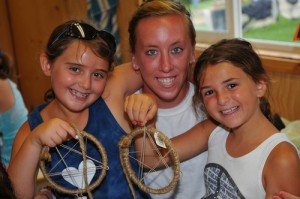 by providing a creative outlet for children who are being given fewer chances to explore the arts in their school programs. Ashfaq Ishaq, PhD, argues that without being given the appropriate opportunity to explore their creative sides, children will not learn how to combine creativity with acquired knowledge to reach their full potential. Art encourages spontaneity and exploration, two things that allow us, as people, to be innovative and prolific in our thinking. Creativity also refines problem solving skills by helping us understand how to think “outside the box” when traditional solutions aren’t practical. All three qualities are considered crucial to success in a child’s education as well as their adulthood careers. Summer camp Arts & Crafts programs also give campers the opportunity to try some projects that might not be available in traditional school art programs, such as throwing clay on a pottery wheel.
by providing a creative outlet for children who are being given fewer chances to explore the arts in their school programs. Ashfaq Ishaq, PhD, argues that without being given the appropriate opportunity to explore their creative sides, children will not learn how to combine creativity with acquired knowledge to reach their full potential. Art encourages spontaneity and exploration, two things that allow us, as people, to be innovative and prolific in our thinking. Creativity also refines problem solving skills by helping us understand how to think “outside the box” when traditional solutions aren’t practical. All three qualities are considered crucial to success in a child’s education as well as their adulthood careers. Summer camp Arts & Crafts programs also give campers the opportunity to try some projects that might not be available in traditional school art programs, such as throwing clay on a pottery wheel.
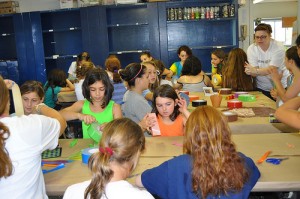 For many campers, summer camp has become a way of maintaining tradition in environments that are ever changing. Faced with a fast paced, changing world in the winter, children can still depend on summer as a way to fall back on activities and hobbies that may not be greatly valued in conventional schools anymore but are useful and bring satisfaction. Arts and Crafts may be a dying art within American school systems. But it’s thriving within American summer camps.
For many campers, summer camp has become a way of maintaining tradition in environments that are ever changing. Faced with a fast paced, changing world in the winter, children can still depend on summer as a way to fall back on activities and hobbies that may not be greatly valued in conventional schools anymore but are useful and bring satisfaction. Arts and Crafts may be a dying art within American school systems. But it’s thriving within American summer camps.
Taking One for the Team
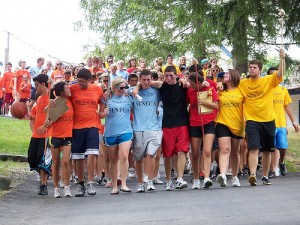 They’re a staple of summer camp lore…Color Wars, although some camps prefer less confrontational terms, such as “Olympics”, “College Days” “Tribal”, or “Challenge”. They’re steeped in tradition and every American summer camp has one, a competition usually held toward the end of the summer that, over multiple days, splits the camp into two teams and pits them against each other. How can something like this be valuable when summer camp emphasizes family, togetherness, and spirit? In short, these special season-ending programs give campers (and staff) the opportunity to demonstrate what they’ve learned over the summer. In order to succeed in the various challenges that comprise these competitions, campers must draw on the experiences they’ve had and lessons they’ve learned over the summer. They’re challenged in everything from sports to trivia. But perhaps what’s most amazing about these events is that, in the end, it’s not about which team wins or loses. It’s about being part of something bigger than the individual…a team, a mindset, a family, and a community.
They’re a staple of summer camp lore…Color Wars, although some camps prefer less confrontational terms, such as “Olympics”, “College Days” “Tribal”, or “Challenge”. They’re steeped in tradition and every American summer camp has one, a competition usually held toward the end of the summer that, over multiple days, splits the camp into two teams and pits them against each other. How can something like this be valuable when summer camp emphasizes family, togetherness, and spirit? In short, these special season-ending programs give campers (and staff) the opportunity to demonstrate what they’ve learned over the summer. In order to succeed in the various challenges that comprise these competitions, campers must draw on the experiences they’ve had and lessons they’ve learned over the summer. They’re challenged in everything from sports to trivia. But perhaps what’s most amazing about these events is that, in the end, it’s not about which team wins or loses. It’s about being part of something bigger than the individual…a team, a mindset, a family, and a community.
Come Rain or Come Shine…
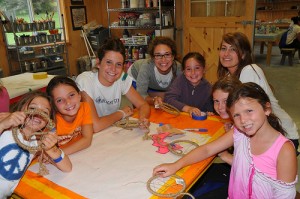 Do you ever wonder what happens at camp when it rains? We assure you, it’s nothing like those scenes in movies that depict bummed out campers forced to spend entire days in their cabins or bunks . Typically, it doesn’t rain all that often in the northeast during the summer and, whenever possible, activities proceed as planned. We never let a few sprinkles get in the way of our regular activities. But on those rare days when there is just no way around it, we’re ready!
Do you ever wonder what happens at camp when it rains? We assure you, it’s nothing like those scenes in movies that depict bummed out campers forced to spend entire days in their cabins or bunks . Typically, it doesn’t rain all that often in the northeast during the summer and, whenever possible, activities proceed as planned. We never let a few sprinkles get in the way of our regular activities. But on those rare days when there is just no way around it, we’re ready!
When we wake up to a morning that makes outdoor activities unrealistic, we swing into action by implementing alternative programs. Camp is just as fun and active when it’s a little bit wet outside as it is when the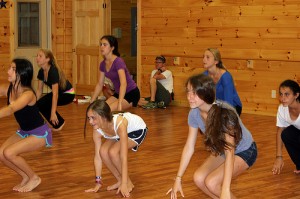 sun is shining. By utilizing our indoor facilities, we’re able to keep the action going by combining our regular programs that are already completely or partially indoors, like gymnastics and arts and crafts, with special activities, like games, trivia contests, or sing-a-longs. Sometimes, we simply move some of the things we normally do outside to an indoor location. Ga-ga, basketball, and soccer, for instance, all adapt well to indoor locations. By making just a few minor adjustments, we’re able to make sure that everyday at camp is full of good times and memories for our campers, not just those days when the sun shines.
sun is shining. By utilizing our indoor facilities, we’re able to keep the action going by combining our regular programs that are already completely or partially indoors, like gymnastics and arts and crafts, with special activities, like games, trivia contests, or sing-a-longs. Sometimes, we simply move some of the things we normally do outside to an indoor location. Ga-ga, basketball, and soccer, for instance, all adapt well to indoor locations. By making just a few minor adjustments, we’re able to make sure that everyday at camp is full of good times and memories for our campers, not just those days when the sun shines.
Where in the World are America’s Finest Summer Camps? Part I
Have you ever wondered where, exactly, are American summer camps? What are the towns like? Is there anything worth a look besides the camp? The answer is YES! America’s Finest Summer Camps are located in some of the most beautiful and historical areas of the U.S. and the surrounding regions are often overflowing with plenty of worthwhile things to do and see. The following blog is courtesy of Camps Laurel and Laurel South and provides a glimpse into Mount Vernon and Casco, the homes of the Laurel camps.
« If you know Camp Laurel or Laurel South, you’re familiar with Mount Vernon or Casco. You might think of them as way stations on your way to or from camp – but they’re much more than that.
 Mount Vernon is a gem in the Kennebec River valley. The tiny beach next to the community center; the former church with Victorian stick-work; the 200-year-old gristmill; the brick general store selling everything you could possibly think of (from bait to pesto) – all make it worth more than drive-through on the way somewhere else.
Mount Vernon is a gem in the Kennebec River valley. The tiny beach next to the community center; the former church with Victorian stick-work; the 200-year-old gristmill; the brick general store selling everything you could possibly think of (from bait to pesto) – all make it worth more than drive-through on the way somewhere else.
Filled with artists, writers, educators, farmers and retirees, it’s got a quirky, eclectic but very real community feel. It’s also got plenty of history. Elizabeth Arden built a health spa here. Her guests included Eleanor Roosevelt, Judy Garland and Ava Gardner.
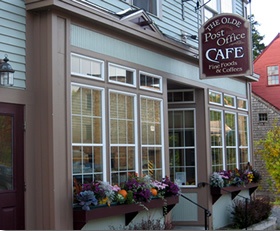 Mount Vernon has a “hippie sensibility” – really a spirit of independence and self-reliance – that dates back to the 1700s, Downeast Magazine has written. With only 1,500 residents – along with moose, deer and bald eagles — the town packs a lot into its hilltop meadows, wooded valleys, ponds and lakes.
Mount Vernon has a “hippie sensibility” – really a spirit of independence and self-reliance – that dates back to the 1700s, Downeast Magazine has written. With only 1,500 residents – along with moose, deer and bald eagles — the town packs a lot into its hilltop meadows, wooded valleys, ponds and lakes.
If you have time for only one thing in Mount Vernon, head to the Olde Post Office Café. It’s the unofficial town center for breakfast or lunch. You won’t regret it.
Casco, in the Sebago Lakes Region, also dates its founding to the 1700s. It too was a mill town. In the 1840s, steamboats on Sebago Lake and the canals carried tourists and freight. The lake – since 1938, part of a state park – helps shape the town’s character, and provides plenty of recreational opportunities.
Point Sebago Resort offers many of the amenities of Laurel South (for those who are not of camp age), while the town itself – about the same size as Mount Vernon – has a variety of good restaurants. One of our favorite stops is Webbs Mills Variety just down the road from camp. It’s meatloaf sandwich is a favorite. And how about Crescent Lake? It is truly one of southern Maine’s most beautiful. There’s really nothing like it.
 You also can’t leave Casco without a quick stop at Blacksmiths Winery for a sip on the famous Porch or in the Tasting Room.
You also can’t leave Casco without a quick stop at Blacksmiths Winery for a sip on the famous Porch or in the Tasting Room.
Casco’s not far from Portland – providing a nice counterpart to city and ocean tourism for anyone heading back and forth from Laurel South.
So, join us at camp this summer for a visit…and get a taste of the local color in Mt Vernon or Casco. »
In Part II, we’ll take a look at some of the unique and special areas of the Catskills and Poconos, the beautiful mountain areas of Northeast Pennsylvania and New York state that surround Camps Starlight and Weequahic.
« Sports Camp » Isn’t Just a One Sport Term
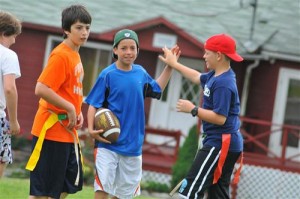 It’s no secret that summer camps offer campers the opportunity to sample many different sports, but what may not be evident is why this may be preferable to sending children to a camp at which the focus is exclusively on one sport. Dr. Jared Wood, a sports psychologist, believes children should be encouraged to try many different sports in order to find their favorites. He warns that focusing on one sport too early in youth often “unnecessarily limits a child’s interest and skill development.”
It’s no secret that summer camps offer campers the opportunity to sample many different sports, but what may not be evident is why this may be preferable to sending children to a camp at which the focus is exclusively on one sport. Dr. Jared Wood, a sports psychologist, believes children should be encouraged to try many different sports in order to find their favorites. He warns that focusing on one sport too early in youth often “unnecessarily limits a child’s interest and skill development.”
Many child development experts recommend that children be given the 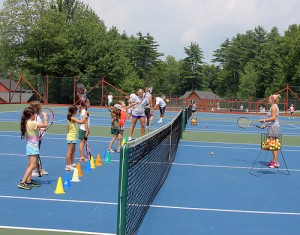 opportunity to try out a sport before committing to it because it’s important for them to develop their self esteem prior to joining a team and engaging in intense training. When children enter a sport with confidence, they’re more likely feel that they can do well and, therefore, strive to do well. Many summer camp sports programs subscribe to this recommended combination of skill instruction and giving children the opportunity to use those new skills on the field or court. Summer camps also emphasize skill development over winning or losing. Campers learn sports skills in a supportive atmosphere and are taught by specialists who are proficient in their respective sports Many summer camp sports programs are headed by college or high school coaches who lead counselors who played at the high school and college level. This type of approach permits campers to try out various positions and get comfortable with the rules and general flow of a sport without feeling pressured to do well by overly zealous parents and coaches.
opportunity to try out a sport before committing to it because it’s important for them to develop their self esteem prior to joining a team and engaging in intense training. When children enter a sport with confidence, they’re more likely feel that they can do well and, therefore, strive to do well. Many summer camp sports programs subscribe to this recommended combination of skill instruction and giving children the opportunity to use those new skills on the field or court. Summer camps also emphasize skill development over winning or losing. Campers learn sports skills in a supportive atmosphere and are taught by specialists who are proficient in their respective sports Many summer camp sports programs are headed by college or high school coaches who lead counselors who played at the high school and college level. This type of approach permits campers to try out various positions and get comfortable with the rules and general flow of a sport without feeling pressured to do well by overly zealous parents and coaches.
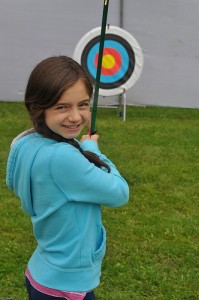 Another benefit of summer camp sports programs is that they offer a healthy mix of team and individual sports. Child experts point out that some children prefer and perform at their best as part of a team while others are happier and better off playing individual sports. By being able to simultaneously sample tennis and lacrosse, for instance, campers can get a feel for which one leaves them feeling the most motivated to further develop their skills while still being able to have a healthy appreciation for the other.
Another benefit of summer camp sports programs is that they offer a healthy mix of team and individual sports. Child experts point out that some children prefer and perform at their best as part of a team while others are happier and better off playing individual sports. By being able to simultaneously sample tennis and lacrosse, for instance, campers can get a feel for which one leaves them feeling the most motivated to further develop their skills while still being able to have a healthy appreciation for the other.
The variety offered at summer camp also gives campers the opportunity to try sports to which they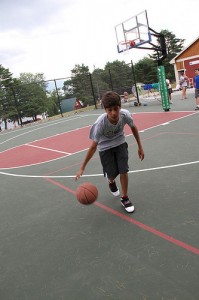 may never have been exposed or would not otherwise have the opportunity to try. Many a camper has tried a sport for the first time at summer camp and then gone on to play on a travel team, high school team, or even a college team. Sports psychologist and author, Richard Ginsburg, Ph.D., suggests that children should be at least “12 or 13” before being encouraged to commit to one sport. Dr. Wood agrees, “It’s pretty clear that early specialization is much more likely to lead to burnout than it is to a scholarship or Olympic medal.”
may never have been exposed or would not otherwise have the opportunity to try. Many a camper has tried a sport for the first time at summer camp and then gone on to play on a travel team, high school team, or even a college team. Sports psychologist and author, Richard Ginsburg, Ph.D., suggests that children should be at least “12 or 13” before being encouraged to commit to one sport. Dr. Wood agrees, “It’s pretty clear that early specialization is much more likely to lead to burnout than it is to a scholarship or Olympic medal.”
So when you’re determining which type of summer camp is right for your child. Consider the benefit of a summer camp that offers a diverse array of sports that will permit your child to sample a variety of choices.
Reflections of a Senior Camper
For parents, deciding when, or even if, to send your children to summer camp–whether it’s for a few weeks or seven–is a big decision. They’re young. You wonder if they’ll remember to brush their teeth or make their beds. You want to know that they’re going to make friends and have fun every moment of everyday. Sometimes the best people to speak in favor of summer camp are campers themselves. The following is a blog from a senior camper at one of America’s Finest Summer Camps:
« Hello, my name is Kyle S and I’m currently sitting with my friends Carly and Sylvie and we have decided to render on the past times of Camp Starlight. Throughout the past seven summers here, the meaning of camp has transformed tremendously.
Arriving on this beautiful campus seven summers ago, I came as a stranger, not knowing what to expect. Would I make friends? Could I last seven weeks away from my parents? Will I be able to play sports several hours of the day? Questions similar to these flooded my eight year old mind but within that same summer I had made my best friends and now, in 2011 those girls have transitioned into my sisters.
As an Upper Senior I can laugh at the questions plaguing my young junior mind. My friends are my sisters, seven weeks isn’t enough time away from my parents and I wish there were more hours in the day to do the things I enjoy so much! Camp has easily been the best thing I have ever experienced and I am so thankful for my time spent here. »
Well said, Kyle!
A Special Place for Girls and Boys
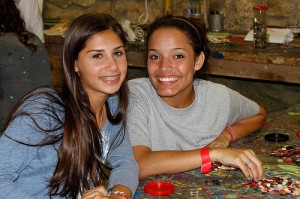 For older campers, one of the most profound and lasting advantages of camp is the opportunity they have to focus on being boys and girls. Many summer camps also strengthen the safety of the camp setting by offering exclusive programs that help teenage campers gain a better understanding about how to best grasp the transition from being girls to being women and from being boys to being men. Such programs provide non threatening forums for teenage girls and boys to address sensitive issues and topics as well as help them prepare for their later teen years as they near college and adulthood. These programs also have their own rites and traditions that serve as progress points for individuals as well as groups and as the basis for the point at which camp friends become a lifelong support network.
For older campers, one of the most profound and lasting advantages of camp is the opportunity they have to focus on being boys and girls. Many summer camps also strengthen the safety of the camp setting by offering exclusive programs that help teenage campers gain a better understanding about how to best grasp the transition from being girls to being women and from being boys to being men. Such programs provide non threatening forums for teenage girls and boys to address sensitive issues and topics as well as help them prepare for their later teen years as they near college and adulthood. These programs also have their own rites and traditions that serve as progress points for individuals as well as groups and as the basis for the point at which camp friends become a lifelong support network.
Many camps, even co-ed ones, also operate separate programs for boys and girls regardless of age. They have their respective sides 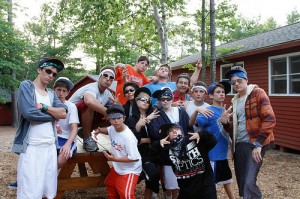 of camp, their respective program areas, and their respective activities. However, they come together for meals and many evening camp activities. Many believe this approach is a bit part of why children are afraid to relax and even be silly while at camp. Being with children of the same gender frees them of stereotypes that may be placed on them elsewhere. Spending exclusive time with other girls or boys creates a non threatening environment, particularly for adolescents and early teens already going through awkward changes as they begin to maneuver the sometimes tumultuous teen years. Girls can get down and dirty in an intense game of flag football and boys don’t feel the need to look over their shoulders while bouncing around in the camp’s gymnastics area or putting together some choreographed moves in the dance studio because it’s all just a part of camp.
of camp, their respective program areas, and their respective activities. However, they come together for meals and many evening camp activities. Many believe this approach is a bit part of why children are afraid to relax and even be silly while at camp. Being with children of the same gender frees them of stereotypes that may be placed on them elsewhere. Spending exclusive time with other girls or boys creates a non threatening environment, particularly for adolescents and early teens already going through awkward changes as they begin to maneuver the sometimes tumultuous teen years. Girls can get down and dirty in an intense game of flag football and boys don’t feel the need to look over their shoulders while bouncing around in the camp’s gymnastics area or putting together some choreographed moves in the dance studio because it’s all just a part of camp.
Sing, Sing a Song
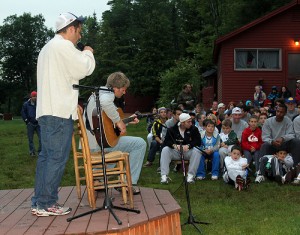 There is something about singing that brings people together. Perhaps that’s why singing (and music in general) is such an important part of camp. The silly or sometimes sentimental words of a “camp song” can set a mood, evoke a feeling, and create atmosphere. Music is a universal language that everyone understands. Perhaps this is why so many American summer camps open and close their summers with sing-alongs. Sing-alongs are fantastic ways to say both “we’re together again” and “until next time.”
There is something about singing that brings people together. Perhaps that’s why singing (and music in general) is such an important part of camp. The silly or sometimes sentimental words of a “camp song” can set a mood, evoke a feeling, and create atmosphere. Music is a universal language that everyone understands. Perhaps this is why so many American summer camps open and close their summers with sing-alongs. Sing-alongs are fantastic ways to say both “we’re together again” and “until next time.”
Ask campers to name some of their most favorite moments of summer camp and, 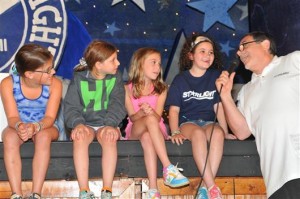 most assuredly, they’ll name more than one that involves singing in some way…that first exciting night of camp, campfires, zany and often spontaneous dining room rituals, fun times with fellow campers and counselors inside the bunk, and saying goodbye at the end of the summer. More importantly, ask any current or former camper to sing his camp alma mater and he’ll do it as if it’s second nature. The words of a camp’s alma mater are magical—a way to instantly transport one back to camp and those summers filled with fun and friends.
most assuredly, they’ll name more than one that involves singing in some way…that first exciting night of camp, campfires, zany and often spontaneous dining room rituals, fun times with fellow campers and counselors inside the bunk, and saying goodbye at the end of the summer. More importantly, ask any current or former camper to sing his camp alma mater and he’ll do it as if it’s second nature. The words of a camp’s alma mater are magical—a way to instantly transport one back to camp and those summers filled with fun and friends.
Many parents say that their children even sing camp songs constantly throughout the winter as a way of remembering their time at camp. Some of them even admit that they can’t resist the temptation to join in.
Crazy Days and Whacky Nights
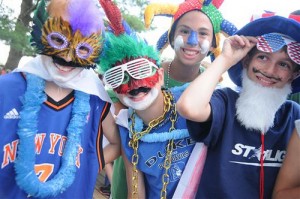 Parents, do you ever log onto your computer to check out the camp photos for the day, see your child painted in blue from head to toe or maybe wearing a crazy wig and big nerdy glasses and wonder, ‘What in the world?’ The answer probably has something to do with your summer camp’s special events and evening activities. For fifty plus nights (and some days) summer camps entertain your children with some of the zaniest games and wackiest contests that they can come up with. Why? Because it’s fun to be painted in blue from head to toe…seriously. Or at least it is when your bunk/cabin is performing a dance to the Smurfs theme in front of the entire camp and you’re Papa Smurf—or Smurfette. And seeing images of your children and their counselors slipping, sliding, and splashing around in what appears to be multi-colored goo…it’s a camp thing…a really fun camp thing. Eye patches are always fun. So is spending a day pretending to be pirates and searching for buried treasure. Becoming a secret agent and collecting clues to decode a message or pretending to be wild animals is also a great way to spend that occasional non-program day. From trivia contests to talent contests and everything in between, some of the greatest moments of summer camp happen during the crazy days and wacky nights!
Parents, do you ever log onto your computer to check out the camp photos for the day, see your child painted in blue from head to toe or maybe wearing a crazy wig and big nerdy glasses and wonder, ‘What in the world?’ The answer probably has something to do with your summer camp’s special events and evening activities. For fifty plus nights (and some days) summer camps entertain your children with some of the zaniest games and wackiest contests that they can come up with. Why? Because it’s fun to be painted in blue from head to toe…seriously. Or at least it is when your bunk/cabin is performing a dance to the Smurfs theme in front of the entire camp and you’re Papa Smurf—or Smurfette. And seeing images of your children and their counselors slipping, sliding, and splashing around in what appears to be multi-colored goo…it’s a camp thing…a really fun camp thing. Eye patches are always fun. So is spending a day pretending to be pirates and searching for buried treasure. Becoming a secret agent and collecting clues to decode a message or pretending to be wild animals is also a great way to spend that occasional non-program day. From trivia contests to talent contests and everything in between, some of the greatest moments of summer camp happen during the crazy days and wacky nights!

 570-798-9831
570-798-9831
